#Aldwych Theatre
Explore tagged Tumblr posts
Text

Maggie Smith representando a Lady Bracknell en A importancia de chamarse Ernesto The Importance of Being Earnest, de Oscar Wilde no Aldwych Theatre de Londres
28 notes
·
View notes
Text
on this day in 1963
A Midsummer Night's Dream






A gala performance of A Midsummer Night’s Dream at the Aldwych Theatre on July 11, 1963 in honour of King Paul and Queen Friederike's state visit.
19 notes
·
View notes
Video
youtube
Lottie Mayor, a British stage and screen actress, singer, television presenter and voiceover artist, accompanied by Sir Andrew Lloyd Webber on the piano, performs “Whistle Down the Wind” at Webber’s 50th birthday celebration held at the Royal Albert Hall London (1998).
“Whistle Down the Wind” is a powerful and evocative song from the musical of the same name. It has captivated audiences around the world with its emotive lyrics and haunting melody. The song explores themes of hope, faith, and the enduring power of love. Through poignant lyrics and beautiful harmonies, Whistle Down the Wind transcends the boundaries of language and touches the hearts of listeners. The core meaning of the song revolves around the idea of finding solace and redemption in the face of adversity. It speaks to the belief that even in our darkest moments, there is always a glimmer of hope. “Whistle Down the Wind” reminds us that love and faith can provide us with the strength to overcome challenges and find peace in the midst of chaos.
The musical premièred in 1996 at the National Theatre in Washington, D.C., and a concept album was released in 1998 and has been revived several times since then and toured extensively. A reworked, and more successful, production opened in the West End at the Aldwych Theatre on 1 July 1998, starring Marcus Lovett as The Man and Lottie Mayor as Swallow. It ran for 1,044 performances and closed in January 2001.
“Whistle down the wind Let your voices carry Drown out all the rain Light a patch of darkness Treacherous and scary
Howl at the stars Whisper when you're sleeping I'll be there to hold you I'll be there to stop The chills and all the weeping Make it clear and strong So the whole night long Every signal that you send Until the very end I will not abandon you My precious friend
So try and stem the tide Then you'll raise a banner Send a flare up in the sky Try to burn a torch And try to build a bonfire Every signal that you send Until the very end, I'm there So whistle down the wind For I have always been right there
Howl at the stars Whisper when you're sleeping I'll be there to hold you I'll be there to stop The chills and all the weeping Make it clear and strong So the whole night long Every signal that you send Until the very end I will not abandon you My precious friend
So whistle down the wind Let your voices carry Drown out all the rain Light a patch of darkness Treacherous and scary Every signal that you send Until the very end, I'm there
So whistle down the wind For I have always been right there.”
2 notes
·
View notes
Text
Ian and Ian McKellen in The Marquis of Keith at the Aldwych Theatre, London 19 November 1974. He made to Ian a moving tribute the next day of his sudden passing. No word. Beautifully written
« In 1989, the Royal Shakespeare Company actors were rehearsing Trevor Nunn’s production of Othello in a church hall in London when the news reached us that Laurence Olivier had died. The greatest theatre man of our time was gone. The curtain had fallen. It seemed heartless to proceed, particularly with a play that Olivier had triumphed in, so we abandoned rehearsals as Trevor and I went off to record our tributes for BBC.I remembered this yesterday afternoon, with more bad news at rehearsals, again with Trevor and the RSC. We were discussing the storm scenes in King Lear. Jonathan Hyde blurted out his wife had just phoned to say Ian Richardson had died in his sleep, aged 72. It seemed incredible. I had seen him so recently onstage, gloriously strutting as Epicure Mammon in the National Theatre’s The Alchemist. Trevor reminisced about his first major production for the RSC, The Revenger’s Tragedy, with Richardson starring as Vendice. This was but one of a string of dramatic villains which culminated, as far as the general public is concerned, on television, with his dastardly Urquart, the Prime Minister in Michael Dobbs’ House of Cards.Over a decade or more, Richardson was a shining star at Stratford for the RSC. When I played the Brooklyn Academy of Music in 1974, where he had just shared Richard 11 and Bolingbroke with Richard Pasco on an RSC tour, I was mistaken for him a couple of times. The next year we were both cast in The Marquis of Keith, again for the RSC. It is not an easy play and mine a fiendish part. Richardson as ever was effortlessly in charge of his own, whilst I floundered, even to the extent of forgetting my lines at a number of performances. At each shameful dry, Ian helped me through by providing a subtle prompt and although he must have disapproved of what can only be called “an error in stagecraft”, he never showed it. He was a company man and a gentleman.He was brought up in Scotland although drama school training had eradicated his native accent. He was most famous for his voice which could mellifluously flute or bellow, an instrument that any Lear would envy. Of late he regretted that he wasn’t much considered for the great roles he was fitted to play and said something to the effect that “Lear only goes to people like McKellen these days”. On and off stage he hid what perhaps he felt to be a failing: his height. A few inches short of six feet, he always wore lifts hidden within his shoes. Yet he needn’t have worried. Striding on as Vendice, Richard 111, Angelo, or Richard 11 he seemed as imposing as the tallest of actors. Within him was the fire and the power. It exploded in the jealousy of his magnificent Ford in The Merry Wives of Windsor just as effectively as in the tragic roles. If only he had played King Lear »
Ian McKellen, 10 February 2007
Source: http://www.mckellen.com/writings/070210ir.htm

5 notes
·
View notes
Text

Sydnie Christmas Live 2025, Aldwych Theatre - @sydniechristmas #SydnieChristmas #AldwychTheatre - Aldwych Theatre Read full review here: https://ift.tt/iWMneG1 More at Music-News.com
0 notes
Text


London, 24 de Fevereiro do Ano 2 - Segunda - Doc - 25 anos.
06:00 - Acordamos e corremos. 07:00 - Voltamos, tomamos banho e nos arrumamos. 07:45 - Tomamos café em casa:

08:30 - Trabalho. 12:30 - Almoço com Thom:

13:00 - Volto ao trabalho. 17:00 - Saio com Pati e Anne. 17:10 - Tomamos chá na casa de Vincent:


18:00 - Passo no mercadinho antes de ir para casa: TotallySwedish

18:40 - Chego em casa, tomo banho e me arrumo. 19:30 - Vou ao teatro com Camilla: Duchess Theatre


21:00 - Comemos pizza: Franco Manca Aldwych




22:30 - A deixo em casa. 22:45 - Chego em casa e durmo.
0 notes
Text
The inception of it was a murder at the village of Lower Quinton, just outside of Stratford-upon-Avon, in which a tramp was murdered by, I think villagers, and his body dragged along so that the blood could fertilise the crops …
There is no English village that has not played host to at least one significant historical event, and I have it in mind that I have known something of Walton’s murder for quite-some-time, though I really can’t be sure. I have it in mind that the incident is infamous and that everyone knows something of it, but in truth, that really depends on to whom you speak and what circles they move in.
Alternatively, if it were not for prolific playwright and novelist John Bowen, I may well have never heard of Charles Walton, a farm labourer whose mutilated body was found among the hedgerows of Firs Farm, Lower Quinton, on the evening of the 14th of February, 1945.
Over time, the details of Walton’s murder have become other things and as it is, you could be forgiven for thinking that Bowen’s comments were in reference to the circumstances of David Rudkin’s 1962 play Afore Night Come, not Robin Redbreast.
John once told me that Robin Redbreast was partly inspired by (and partly filmed in) Old Lodge Farm, which lies roughly 9 miles north-east of Banbury. John purchased the property sometime during the latter half of 1970 and was resident there until his death, in 2019.
It's sometimes difficult to reconcile the lightness of John’s character with the darkness that can be found in key-works such as Robin Redbreast and A Photograph. That said, Robin Redbreast, to which our attention is drawn, is relatively straightforward in comparison to its malevolent sibling, A Photograph. A Photograph is far from straightforward and the late appearance of Mrs. Vigo (Freda Bamford), last seen standing in front of Old Lodge Farm, seven years earlier, asks more questions than it answers. ...
— John Bowen is quoted in conversation for inclusion as an “extra” on the BFI’s 2013 DVD release of Robin Redbreast.
— Robin Redbreast (TV Drama). Written by John Bowen and directed by James MacTaggart. Produced as part of the British Broadcasting Corporation’s Play for Today anthology series. Originally transmitted on the 10th of December, 1970. Though I understand that, due to a nationwide power-outage, the final minutes of the program were not transmitted and as a consequence, Robin Redbreast was repeated on the 25th of February, 1971.
A theatrical version of Robin Redbreast was staged by the Guildford Theatre Co., 15th of October 1974, at the Yvonne Arnaud Theatre, Guildford.
— A Photograph (TV Drama). Written by John Bowen and directed by John Glenister. Produced as part of the British Broadcasting Corporation’s Play for Today anthology series. Originally transmitted on the 22nd of March, 1977.
— Afore Night Come (Play). Written by David Rudkin and first staged by the Royal Shakespeare Company, 7th of June, 1962, at the New Arts Theatre Club, London. Directed by Clifford Williams.
Revived, as part of the Royal Shakespeare Company’s 1964 season at the Aldwych Theatre, London, Afore Night Come was performed in repertory, along with, amongst others, Pinter’s The Birthday Party, Beckett’s Endgame and Weiss’ The Persecution and Assassination of Jean-Paul Marat as Performed by the Inmates of the Asylum of Charenton Under the Direction of the Marquis de Sade. …
But the author, it soon transpires, is up to something very different: the slice-of-life introduction and the carefully documentary setting are only the bait which leads audiences cheerfully into his trap … The strength of the play lies in two things: the inexorable theatrical logic with which it carries us from its simple realistic opening to the weird, primitive ritual of its climax; and the efficacy of the play on a literal as well as a metaphorical level … Accepting, then, that such things might happen and sometimes do, Afore Night Come builds up a minutely credible picture of how one such case might come about. In this countryside the dark gods still walk (Rudkin’s first favourite adult reading - after Just William and Arthur Ransome - was Hardy, which may have something to do with his view of rural life) and superstitions die hard. Strangers are mistrusted, the weak go to the wall and anything out of the ordinary (barrenness, insanity) is as like as not the fault of something unnatural, someone with the evil eye. — John Russell Taylor, Anger and After, A Guide to the New British Drama, University Paperbacks are published by Methuen & Co., 1971
I have two copies of John Russell Taylor's Anger and After. The aforementioned, revised, with an additional chapter, By Way of Experiment and an earlier edition, inscribed, by the author, to no one in particular, ... A first edition - my goodness, it's practically an historical exhibit - Still, as T. S. Eliot didn't say, as we get older we don't get any younger - John Russell Taylor - October 1970 ...
Somewhere in the archives, I have a copy of John’s play Little Boxes, first published by Methuen & Co. in 1968. The book is dedicated to David Cook, John’s long term partner and inscribed, ... To Bill and Anna - a wonderful Jane! With love John Bowen.
The “Anna” here of course is Anna Cropper, whose portrayal of Robin Redbreast’s protagonist Nora Palmer, anchors us, when required. Her stoicism in the face of such uncertainty is admirable. The “Bill” here is William Roache, an actor most associated with the character of Ken Barlow in the long-running television drama, Coronation Street. At the time, William and Anna were husband and wife, married in 1961 and divorced in 1974.
Little Boxes consists of two interrelated yet separate plays, The Coffee Lace and Trevor. Making its debut at the Hampstead Theatre Club on the 26th of February 1968, before transferring to the Duchess Theatre, later the same year. Although the characters differ, John’s intention was for the cast of one play to perform the other. In The Coffee Lace Anna plays the role of Miss Peel and in Trevor, Jane Kempton.
It is not usual for those that write for television, film or even theatre, to form associations with particular actors and John was no exception. As well as working with Anna, John’s television plays frequently featured actor John Stride. Stride plays the role of Mark Antony in Heil Caesar! (1973), Michael Otway in A Photograph (1977) and Paul in The Ice House (1978).
We have of course met Nora Palmer before. Prior to the unsettling events of Robin Redbreast, prior to a contemplative glass of brandy with Madge and Jake, Nora, script editor for an independent television company, could be found drinking tea with Peter Ash, host of The Living Arts, a “cultural feature” screened monthly at participating cinemas.
The Birdcage was first published by Faber in 1962 and for the most part, concerns itself with the shifting sexual politics of the time, often informed by John’s own experiences and that of those around him. Three years later, what remains of Nora and Peter’s relationship is given due consideration, in Robin Redbreast’s opening scene. …
The space between, the end of one thing and the beginning of another, time is taken-up. Letters, phone-calls, emails, etc. Fac et aliquid operis, ut semper te diabolus inveniat occupatum (engage in some occupation, so that the devil may always find you busy).
Warwickshire County Records Office. Warwickshire and West-Mercia Police. The Metropolitan Police. Warwickshire County Coroner’s Office. Stratford-upon-Avon Herald. The Shakespeare Birthplace Trust. Methuen, Routledge, Harlequin. I have been ably assisted.
As a consequence of this and other preoccupations, stacks of clear plastic storage boxes take-up space in what would otherwise be a perfectly good second bedroom in my medium-sized apartment. …
Wednesday 25/01/2017. The National Archives. A cold morning’s walk through Chiswick, over Chiswick Bridge and along the Thames Path.
The Public Records Office at Kew was designed by English architect John Cecil Clavering for the Office of Works. Clavering is perhaps better known for his work with the Weedon Partnership, designing a series of Odeon Cinemas at Kingstanding, Sutton Coldfield, Colwyn Bay and finally Scarborough. Opened in 1977 and renamed in 2003, the building is a fine example of what is commonly referred to as Brutalist architecture.
My possessions are transferred to a clear plastic bag, an extremely unflattering photograph is taken and a pass produced, a Reader’s Ticket. By prior-arrangement, an item of interest will find its way to an orange-tinted acrylic locker, one of many, alphanumeric, corresponding to a seat within the Reading Room.
MEPO 3/2290 contains the Central Officer’s Special Report 201/45/30 and other, related documentation. Fragile documents cannot be separated out, without the potential for damage. Documentation is comprehensive. That said, reference is made to photographs, taken at the scene and a map, showing the location of Walton’s body, but these things are conspicuous by their absence.
I move to another part of the room to make copies of Chief Inspector Fabian’s original report, by way of an overhead camera. The National Archives’ document scanning service. The resulting .jpeg files are then uploaded, emailed out and, as I return MEPO 3/2290 to the front desk, an elderly woman has a coughing-fit and is escorted from the room. ...
Thank you for your recent email. The National Archives is the archive of records generated by UK central government departments and selected for preservation under the 1958 Public Records Act (and subsequent amendments). The MEPO 3 series contains correspondence and papers of the Metropolitan Police Commissioner's Office and The National Archives’ document reference MEPO 3/2290 contains the full document as accessioned by us. If any photographs were present in the original file they were not selected for permanent preservation under the act. I note from the file description that the murder took place in Stratford upon Avon. Therefore, this case would have been dealt with by the local constabulary and if there are any further surviving records relating to the case they would be held locally. Therefore I would suggest contacting Warwickshire County Record Office in the first instance for informed advice on what historic records may have been deposited with them and secondly, Warwickshire Police directly. I hope this information is helpful. — Steven Cable, Remote Enquiries Duty Officer, The National Archives
National Archives Disclaimer. This email and any files transmitted with it are intended solely for the use of the individual(s) to whom they are addressed. If you are not the intended recipient and have received this email in error, please notify the sender and delete the email. Opinions, conclusions and other information in this message and attachments that do not relate to the official business of The National Archives are neither given nor endorsed by it.
Thank you for your email, Warwickshire case files that are over 50 years old were kept at our Warwickshire Police HQ. After enquiring with the relevant department, I have been informed that following a flood a few years back, all files were either destroyed or badly damaged and therefore unable to be viewed. Please accept my apologies, we will not be able to provide you the information you require. — Kieren Bodill, Operational Communications Assistant, Corporate Communications, Warwickshire and West Mercia Police …
Sunday 17/12/2017. The civil parish of Quinton, Stratford-on-Avon, Warwickshire, England.
1 h 24 min (66.3 miles) via M5. Fastest route, the usual traffic. Get on M5 in South Gloucestershire from A4018. 8 min (3.4 mi). Follow M5 to A46 in Tewkesbury. Take exit 9 from M5. 37 min (40.5 mi). Continue on A46 to your destination in Lower Quinton. 38 min (22.5 mi). Lower Quinton.
Four Thatches, opposite All Saints and before The Firs, which is curious as, from the street, there would appear to be only Three. Walton and his niece Edith Walton (Goode) having occupied the middle cottage, or second from the left, from Friday Street, if there are to be Four. Further along, The Firs, once the location of Alfred Potter’s farm, now a cul-de-sac of detached houses. Properties were registered in 1988.
Walking back along Main Road from The Firs, turning off onto Goose Lane. Halfway along Goose Lane, Lower Quinton turns to Upper Quinton. Goose Lane, The Green and Hill Lane. Hill Lane gives way to a tree-lined track that takes you up onto farmland, up onto Meon Hill’s northern slopes.
I lose my footing and find myself cast to the ground. To mud, to infrequent patches of snow, my Ilford HP5 Plus single-use camera, which I had fished out of my rucksack at The Firs, flung from my hand. Returning now, with care, I find a crab-apple tree amongst the hedgerows. ...
Fourteenth February 1945 - In a field on Firs Farm, Quinton R.D. - Charles Walton - Male - 74 years - of 15, Lower Quinton, Stratford-on-Avon R.D. - Farm Labourer - Shock and haemorrhage due to grave injuries to the neck and chest caused by a pitchfork and a trouncing hook - The injuries having been inflicted by some person or persons unknown (wilful murder) - Certificate received from G. F. Lodder, Coroner for the County of Warwick, inquest 20th March 1945 - Twenty Second March 1945 - Wallace Ellis, Registrar
The 1939 Register is a useful resource for family, social and local historians. As the 1931 census for England and Wales was destroyed by fire during the Second World War and no census was taken in 1941, the 1939 Register provides the most complete survey of the population of England and Wales between 1921 and 1951.
Charles Walton, 12 May 1870, General Labourer, Widowed, Lower Quinton, Stratford-on-Avon R.D., Warwickshire, England. Edith Goode (Walton), 23 May 1911, Unpaid Domestic Duties, Single, Lower Quinton, Stratford-on-Avon R.D., Warwickshire, England.
Alfred J Potter, 01 Oct 1903, Farmer, The Firs Lower Quinton, Stratford-on-Avon R.D., Warwickshire, England. Lilian E Potter, 01 Jun 1905, Unpaid Domestic Duties, Married, The Firs Lower Quinton, Stratford-on-Avon R.D., Warwickshire, England. Grace M Richards, 21 Sep 1913, Unpaid Domestic Duties, Married, The Firs Lower Quinton, Stratford-on-Avon R.D., Warwickshire, England.
Hillground. Identifying the precise location of Hillground will be more difficult I am afraid, as there is no one reliable source for field names. If there are tithe, estate or enclosure maps for an area then the name might appear on the map or accompanying survey, but even where there are names shown, these can of course change over time. As this area has historically been part of Gloucestershire, we don't have many relevant maps. I have found one for which I include details below, but you may wish to contact Gloucestershire Record Office to see if they hold any relevant records. CR1635/350. Small leather bound volume, 6¾" × 9", containing plans and surveys of the following property on the Weston estate; the surveyor is not named - includes Meon Hill Farm in 1832, with a table of the annual state of cultivation, 1831-1855. — David Hodgkinson, Public Service Team, Warwickshire County Record Office …
Society has long-since organised itself in such a way as to make murder almost impossible to get away with. Between the residue of premeditation and the act itself, few murders go unsolved and the majority of murderers are brought to book, within a reasonable period of time.
The details of Walton’s murder are disturbing, upsetting, and although a thorough investigation was undertaken, Charles’ murderer was never found.
As far as Chief Inspector Robert Fabian of the Metropolitan Police was concerned, the only viable suspect was Alfred J Potter, owner of Firs Farm and Walton’s most recent employer. However, regardless of how much Fabian liked Potter for the murder, insufficient evidence and a lack of motive meant that this particular line-of-enquiry was unlikely to result in a conviction. And even if it had, such a conviction would have been considered unsound. ...
201/45/30. 7th April, 1945. Commander E. R. B. Kemble, R. N., Chief Constable of Warwickshire, County Constabulary, Warwick. Dear Kemble, here is a copy of our report and statements in the case of Charles Walton. I am sorry we have had no luck so far, but you never know, something may well still turn up. I hope you are fit. Do look in and see me next time you come to London. Yours sincerely, R M H
The very thorough enquiries made in this case have, so far, uncovered no evidence on which action can be taken. There is suspicion against the farmer Potter, chiefly because of discrepancies in his statements affecting what he says he saw of the murdered man at a time which must have been shortly before the murder. There are, apparently, no finger impressions on the weapons used. The most positive factor, at present, seems to be the missing watch. It may be that the victim’s trousers were undone by the murderer searching for a money belt. If robbery be the motive, the offender is likely to be a person with local knowledge, although this may not be so. — Superintendent Thomas Basil Thompson, Central Officer’s Special Report 201/45/30, April 1945 …
Somewhere in the archives I have a photograph of Detective Superintendent Alec Spooner, head of Warwickshire’s Criminal Investigation Department. Spooner is pictured revisiting the scene of Walton’s murder and it is said that he did so on several occasions.
In 1949 Robert Fabian retires, having attained the rank of Detective Superintendent. Fabian had garnered some notoriety whilst working with the Metropolitan Police and subsequently, became something of a celebrity. In 1956, Robert appears as a castaway on Roy Plomley’s Desert Island Discs, his luxury item, an umbrella and that same year, he parts-company with Winifred Letitia, his wife of 32 years.
Between 1950 and 1954, Naldrett Press published two books by Fabian, Fabian of the Yard and London After Dark. In 1970, Pelham Books published The Anatomy of Crime and In 1954, Fabian of the Yard was adapted by the British Broadcasting Corporation, their earliest foray into Police Procedural Drama.
Robert was undoubtedly a gifted and intuitive detective and I am sure that it was important for him to have felt that he had given a good account of himself. However, I suspect that the disappointment of never having caught whomever was responsible for Walton’s murder had preyed on his mind. …
Anybody can become a witch. All you have to do is to recite an ancient spell that will conjure up the devil. You then dip a quill pen in blood from your veins and sign an agreement selling him your soul. He gives you a silver coin in token, and leaves with you a cat, a bird and a black dog which will act as your fiendish servant and obey your commands. Such is the ritual of black witchery, and you should be warned that it is an offence under the Witchcraft Act of 1735, which is still unrepealed upon the statute books. When you have become a witch you can put the evil eye on your neighbours, make their cattle die, their crops rot.You do not believe such nonsense, and neither do I, yet in the picturesque Tudor village of Lower Quinton, its thatched roofs golden among the Cotswold hills, they speak of witches with a wry grin and many people will not pass from Bidford down Hillborough-Lane for fear of a headless horseman and a ghostly woman in white. — Robert Fabian, Under the Shadow of Meon Hill, Fabian of the Yard, Naldrett Press, 1954 ...
...
The Murder of PC 222 William Hine on 16th Feb 1886, is the longest outstanding unsolved murder that I have been made aware of, and not the Murder of Charles Walton. Kind Regards. — Kieren Bodill, Operational Communications Assistant, Corporate Communications, Warwickshire and West Mercia Police
I’ve had a look at RAF Cooks’s printed research (a copy of which we hold in our library), and specifically exhibited pages of newspapers; principally the Stratford Herald, 26 February 1886. This tells how the body of PC Hine was found in the Warwick and Napton Canal, near a curve in the canal about a quarter of a mile from the Wharf Inn (coming back from the direction of Banbury). According to the accounts, PC Hine was attacked and possibly/probably murdered in a field leading from a footpath known as The Lanket (Stratford Herald), ‘300 yards from his house near the centre of the village’ (Warwickshire Advertiser, 20 February 1886). In the field (which is called White’s field in Cooks’s narrative, but I didn’t spot it being specifically named in the Herald and their version of the inquest) were found PC Hine’s helmet and handkerchief, and footprints, signs of a struggle and blood. So, his body was found in the canal (also referred to as the Oxford Canal in one account), but the murder likely took place in the above mentioned field, and his body was then dragged on a hurdle to the canal. — Amanda Williams, Archivist, Warwickshire County Record Office
Firstly I looked at the 1939 register for Charles Walton and his neighbours in order to cross reference with the electoral register for that year. Unfortunately the record office does not hold the 1939 electoral register containing the parish of Quinton (presumably held by Gloucestershire Archive Service) and there are no registers for the war years. This being said, I looked at our first available electoral register (1950) and began to look for the names of the neighbours from the 1939 census and many were still in residence. The results of these searches using the 1950 electoral register show that the Stanley Family lived at Elmhurst, which still exists, and is the next property to the Four Thatched Cottages. Working backwards from the Stanley family to Charles Walton, cross referencing the names on the census with the electoral register we have the Hayward family living at No. 17 Lower Quinton; the Beasley family have moved, now in the occupation of the Rose family; No. 15 is not listed; Ellen Bowden and the Stowe family are at No. 14 Lower Quinton (1 Church Street on the census). We then move onto residents of Friday Street with the Nicholls family living at 23/24 Friday Street. This would indicate that Nos. 14-17 were the now Four Thatched Cottages with No. 14 being the end cottage on the corner of Friday Street and Main Street with the house of Charles Walton being the second cottage from the corner. So in conclusion 15 Lower Quinton is one of the cottages on the corner of Friday Street and Main Road. — Karen Moulder, Public Service Team, Warwickshire County Records Office
I have had a look, and Alfred J. Potter, farmer, date of birth 16/10/1903 is listed as living at The Firs, Lower Quinton, Warwickshire, England. I could not identify any similar sounding places in the 1939 Register. This seems to confirm your suspicions - and also seems to indicate that the farm was known as ‘The Firs’, as well as ‘Firs Farm’, from at least 1939. — Becky Hemsley, Public Service Team, Warwickshire County Record Office
Michael Bakewell (BBC) “With me now is the person who knew him most and best, his niece Mrs. Goode. Mrs. Goode, Charles Walton was living with you at the time of the murder” Edith Goode “Yes” Bakewell “Do you think there was any chance that witchcraft played any part in his death at all?” Goode “No. I think erm, the papers made a lot of it, erm, and I lived with him all my life and I’ve never known such things, I think it’s ridiculous really the things that were said” Bakewell “What did you think about the theories in the newspapers?” Goode “What the papers said was very disturbing, because none of it was true” Bakewell “Warwickshire is supposed to be one of the great centres of witchcraft, did you ever meet a witch or know anything about witchcraft?” Goode “No, never. I’ve never heard of it. I never remember them talking about witchcraft until this came along”
Old Man’s Terrible Injuries - Inflicted with Billhook and Pitchfork - Tragic Discovery at Quinton - Warwickshire police are investigating what may prove to be a murder of a particularly brutal character. On Wednesday night, following a search, the body of a 74-year-old farm labourer, Mr. Charles Walton, of Lower Quinton, was found with terrible injuries in a field on Meon Hill, where he had been engaged in hedge-laying. A trouncing hook and a two-tined pitchfork are said to have been embedded in his body. Mr. Walton, who lived with his niece, was a frail old man. He suffered considerably from rheumatism and walked with the aid of two sticks … Mr. Walton spent his whole life in Quinton, and was known to everyone. The tragedy has shocked the locality. A neighbour told the Herald that he was a quiet, inoffensive old man, one of the best you would meet in a day’s march, and he was not likely to have had any enemies in the village. He always had a cheery word for everyone, she said. It seems impossible to impute any motive for murder. Miss Walton is engaged to a Stratford man, and following the discovery of the tragedy left her home for Stratford. Last night the police were continuing their inquiries and had visited a camp in the area. Later it was stated that the police regard the crime as the work of a lunatic or someone maddened by drink. — Stratford-upon-Avon Herald, 16th of February, 1945
It is curious that the first story the papers told was that Walton was killed at a Black Mass at midnight, a wonderful story to conjure up scenes of horror, when people noticed that if Walton was killed at a Black Mass at midnight on St. Valentine’s Eve, it was curious that so many people saw him alive and well the next day; so the story was hastily changed. She now said that “he was killed exactly at Mid-day on St. Valentine’s Day”. Now it so happens I was one of the people consulted at the time of the murder, as to the possibility of its being a ritual murder, or a sacrifice. I said it can’t be a sacrifice because, what use is an old cripple for a sacrifice? All races I know of want something young and vigorous. Because I was consulted I was told certain things not usually known, and I presume they are still police secrets, so I don’t mention them. But I can say he was alive and well after mid-day, so this second story is all moonshine. Although, if I am right, in one sense Charles Walton was a human sacrifice; he was a victim of the long campaign of witch-hunting that has been waged throughout the centuries; and the modern purveyors of fear and folly may well take it to their consciences. — Gerald B. Gardner, The Meaning of Witchcraft, 1959
After all, newspaper sensations are a very easy target for criticism, so easy that they are hardly worth shooting at. A new one appears regularly every week, duly makes its contribution to the gaiety of nations, and then comes in very useful for wrapping fish. However, when things are said which may affect the investigation of an unsolved murder, the matter becomes more serious. To unmask irresponsible sensationalism is then a public duty. This mysterious and terrible crime, which shattered the peace of a beautiful, secluded little village in the Cotswolds in 1945, has been the subject of wild speculation, and dark hints of witchcraft and ritual murder. — Gerald B. Gardner, The Meaning of Witchcraft, 1959
— These considerations are dedicated to playwright and novelist John Griffith Bowen. 5th of November, 1924 – 18th of April, 2019.
0 notes
Text

Echo: Theatre-News.com TINA - The Tina Turner Musical extends booking at The Aldwych Theatre - #TINATheMusical @tinathemusical @LoveTinaTurner @TINABroadway #AldwychTheatre @thealdwych #thealdwych #tickets #tour #buytickets #theatretickets #instatickets http://dlvr.it/T27y7H
0 notes
Text

Theatre-News.com TINA - The Tina Turner Musical extends booking at The Aldwych Theatre - #TINATheMusical @tinathemusical @LoveTinaTurner @TINABroadway #AldwychTheatre @thealdwych #thealdwych #tickets #tour #buytickets #theatretickets #instatickets http://dlvr.it/T250Wv
0 notes
Text
UK Trip October 2023 (Part 11)
We return to London!
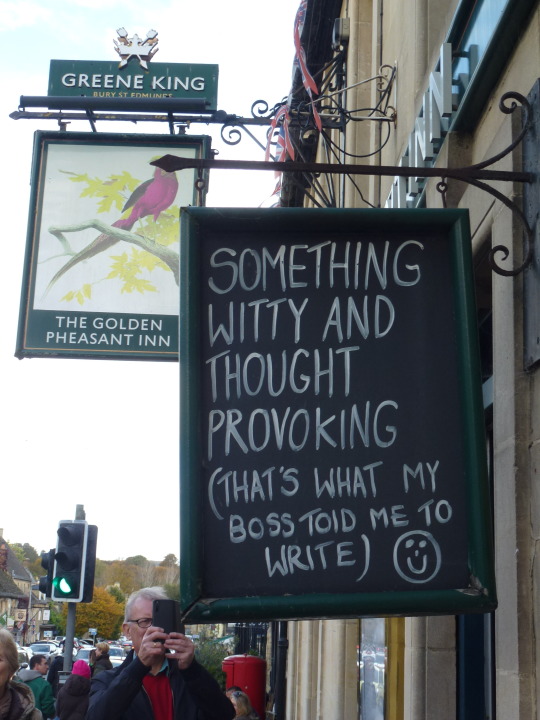
As we continued to London, and passed by Abergavenny, it started to rain. Mum's friend happened to remember a song 'Abergavenny' by Marty Wilde at this point, and played it on her phone. We made some snide comments when he sang 'sunshine forever, lovely weather'.
Once we got to London, we travelled by bus to nearby Tower Bridge (ate at Pizza Express, another yum!) and went for a stroll down there. We also saw someone searching for something with a torch by the river???
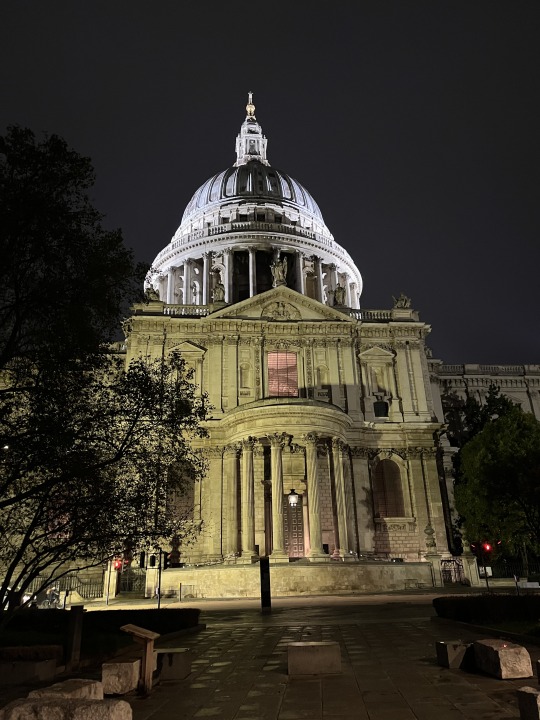
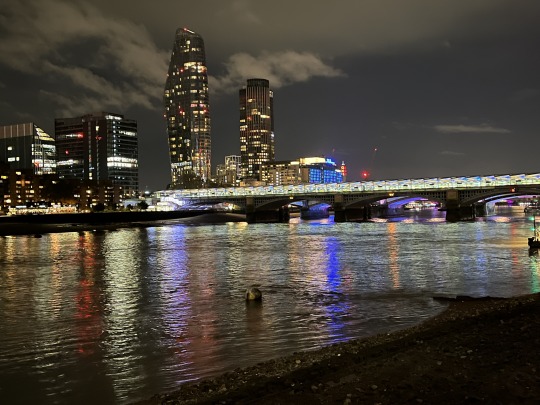


We also saw what looked like a rave party with modern music playing at the Globe Theatre (I can only imagine Shakespeare's characters in costume having a modern kind of party haha)
I held my phone like a vise when taking photos where they could fall a long height or into the water.
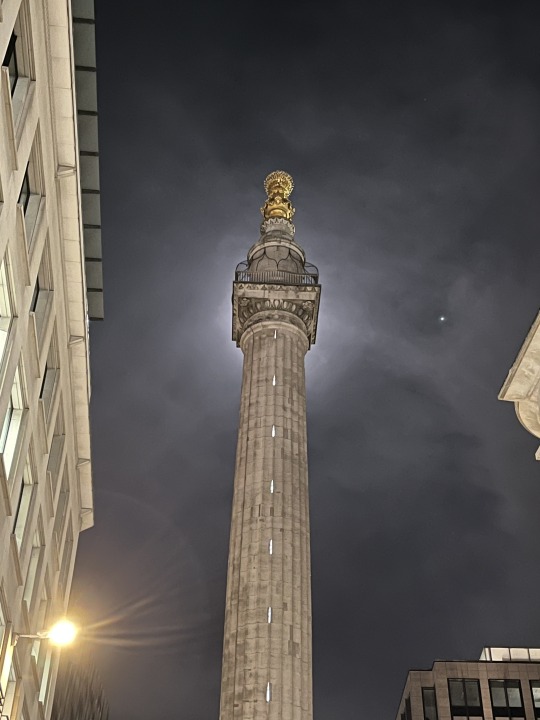
Headed back home for the night (a tourist asked us what bus to take while getting a little too close for comfort (especially considering I wasn't wearing a mask at the moment))
Time change that night, so I got an extra hour of sleep. Also mum's friend made us a bowl of fruit salad every morning (thankfully not mixed together which I'm not keen on) and the fruit was so juicy and good, I tried to savour them as much as possible during my final days there 😭
The next day, we took a brief detour to see Blenda, who turned 101! (mum's friend made Welsh cakes for her because she's also Welsh) She's a cute little lady, but also has a sharp wit about her! She also was visited by a couple of her friends, also cute old ladies, one of which was from Hong Kong and brought some store bought pie cookies (chocolate banana, and honey, we tried the former which I liked, but mum and her friend didn't really care for it) Blenda wouldn't hold back from telling her first friend to (lightheartedly) go away when she was taking her time with leaving (she was packing for a trip to Japan the next day) or telling her second friend that she doesn't want any more food gifts because she has so much. She also talked about how she wouldn't be afraid to mow down the street in her wheelchair if she had her way, but she still would have to watch out for distracted youngsters on their devices. Blenda was a hoot!
After then, mum's friend had to go to a meeting with her fellow tour guides, which she claimed would be pretty long and boring, so she let us to spend some time outside. So we walked along Soho, walking up and down Drury Lane, King's Way, Aldwych, and briefly encountered the British Museum. We mostly looked at the menus of the restaurants we passed by, which looked pretty good, but alas couldn't stop at because we already ate.
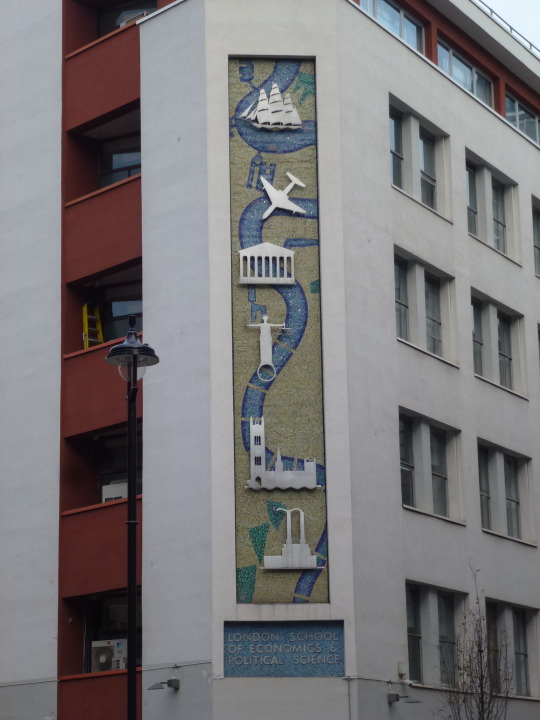

We also found this giant upside down globe. Honestly, if we stopped here first, I think it would have taken me the full 1.5-2 hours to wait for mum's friend's meeting to finish!
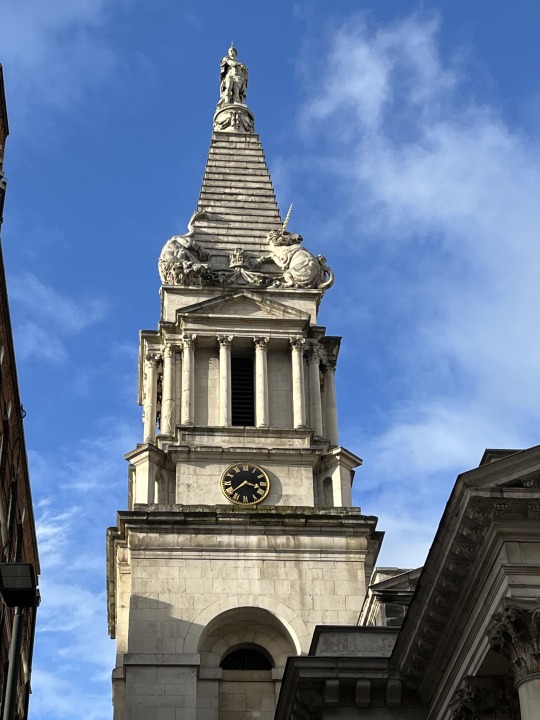
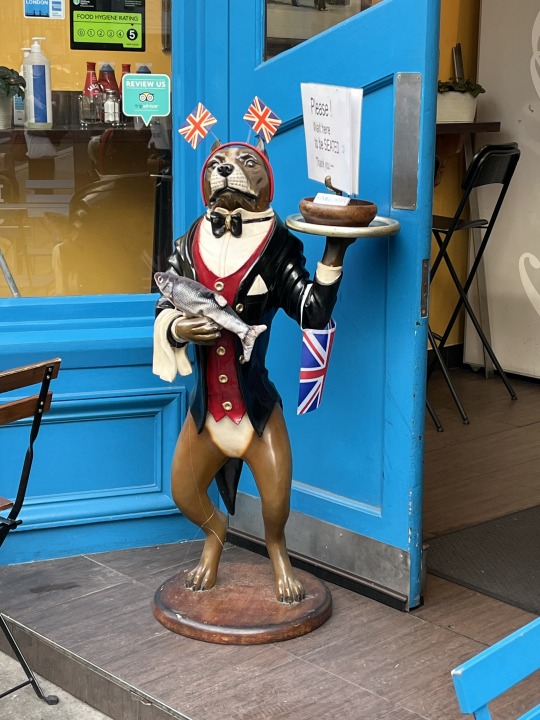
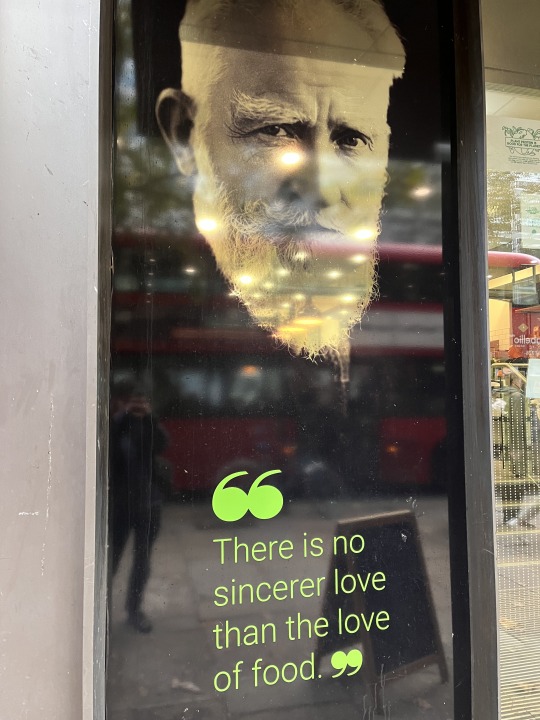
When mum's friend was just about done, we went back to the building she was at and we wandered into Covent Garden, saw a witty street performer who got everyone to encourage him to swallow a long balloon (which I thought looked like a hattifattener) Also walked past a young singer nathanreeve05, heard someone sing opera on the stairs below (even though he dressed very casually) and by chance encountered and went to a Moomin shop and bought some Snufkin socks (I would have liked to have a mug, but 1: it was expensive, 2: we weren't certain how well it would have travelled)
Had tuna pasta at home for dinner, which brought me back to my early college years, which I made for my lunches
Halloween! Side note: In the UK, you let trick or treaters know you'll have sweets for them if you leave a pumpkin by your window. Meanwhile in the US, you just leave your front light on.
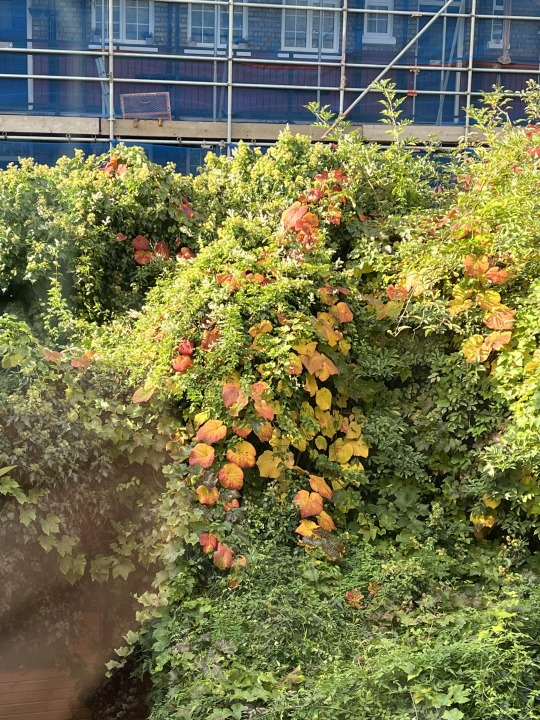
Went for our morning walk, and I saw a yellow bell pepper with a face carved in it as a makeshift pumpkin xD
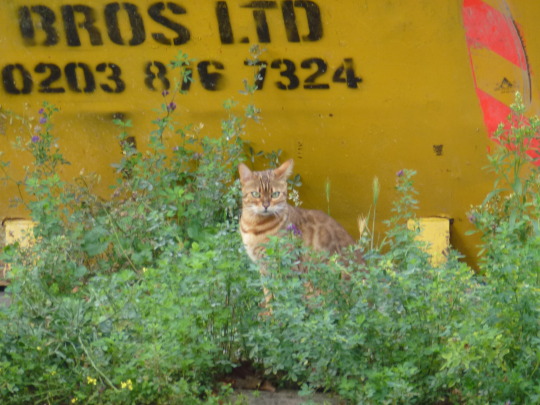

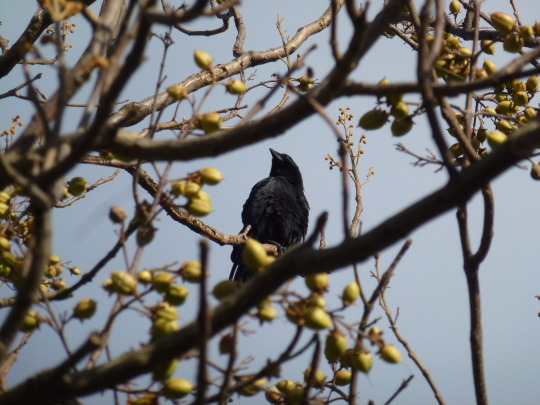

'If you write a story, this is where it takes place'


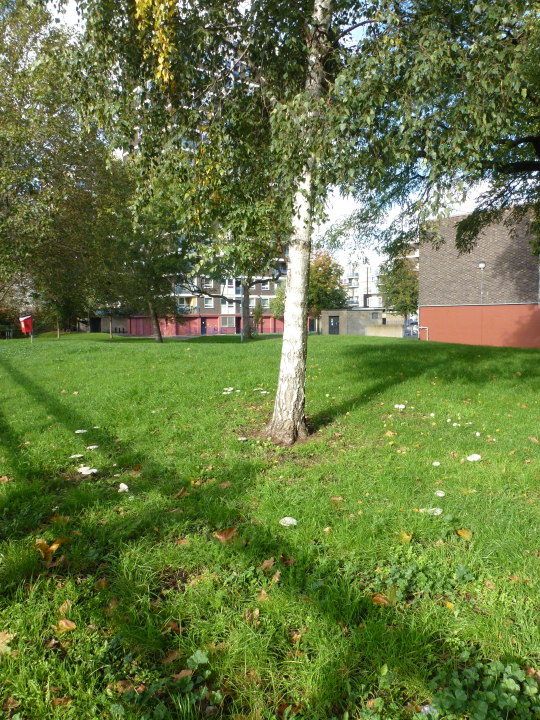
Went to the British Museum (saw some street performers doing a rendition of Ghost Town by The Specials while heading over there)
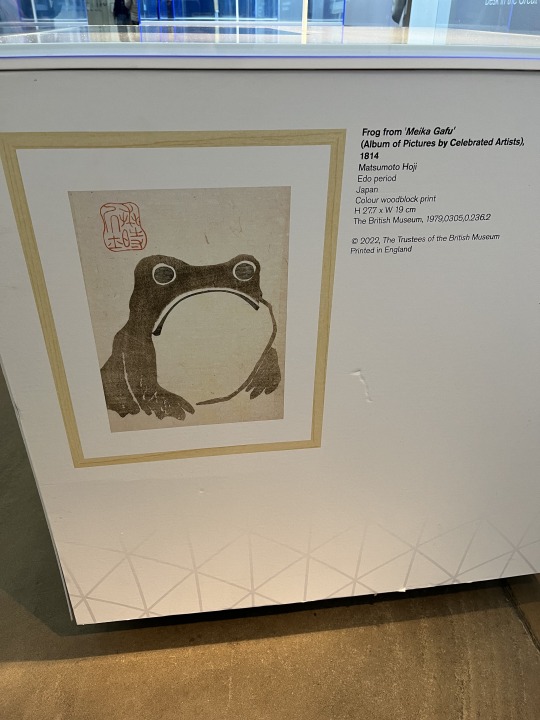
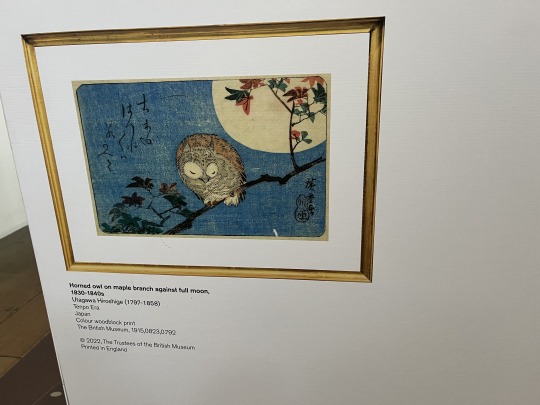
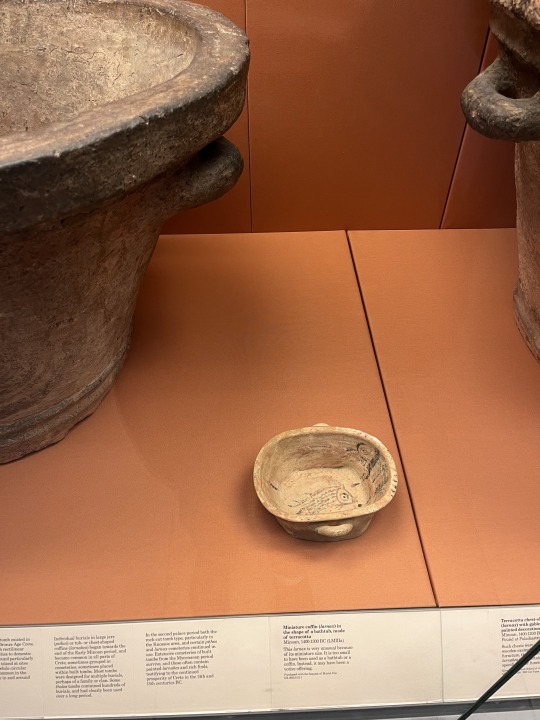
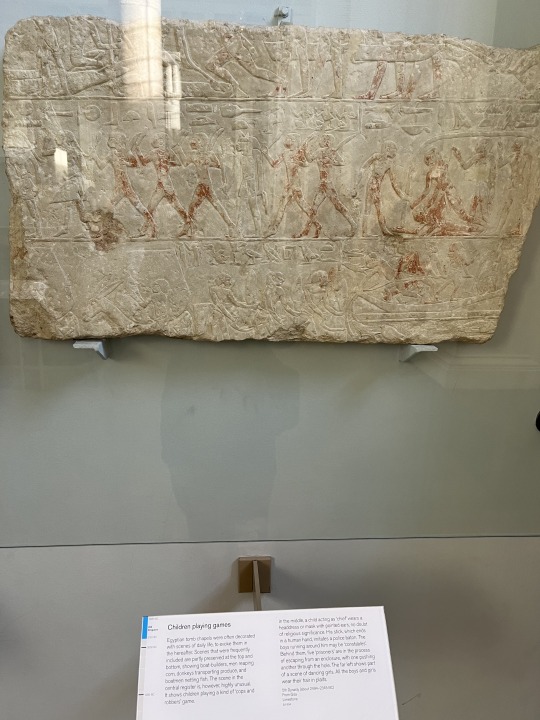
With most of history being serious, it's nice to see proof that children have always been playing games.

Hello old friend
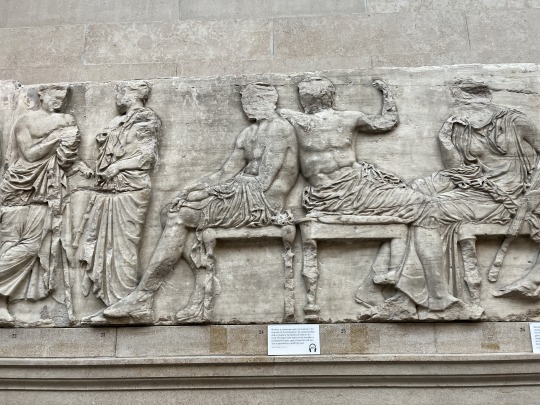
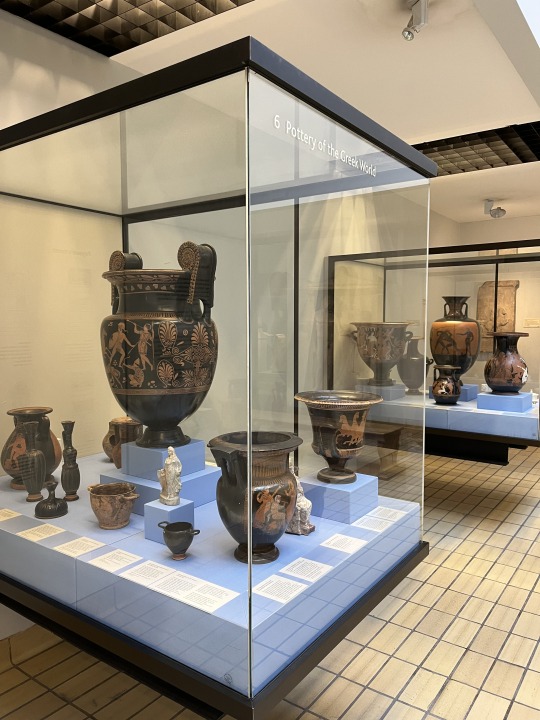
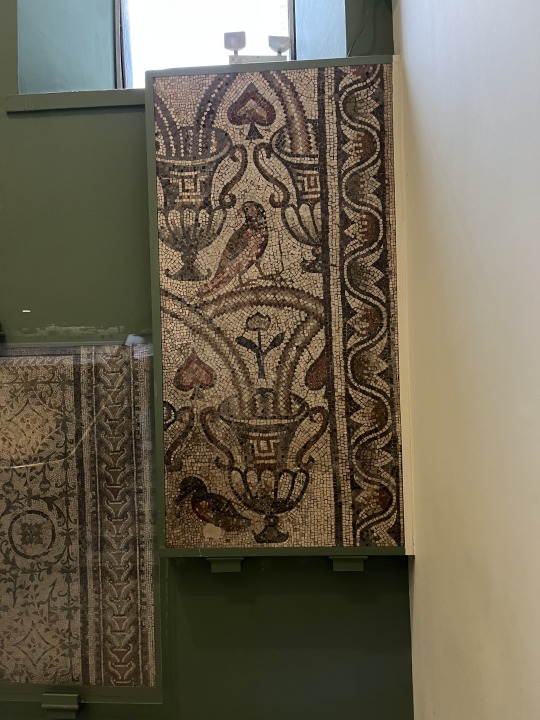
Mosaic duck!
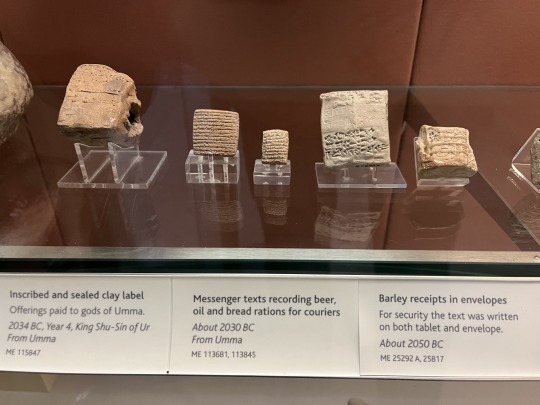
I admire how tiny these are, the one in the middle is a bit bigger than my thumb!
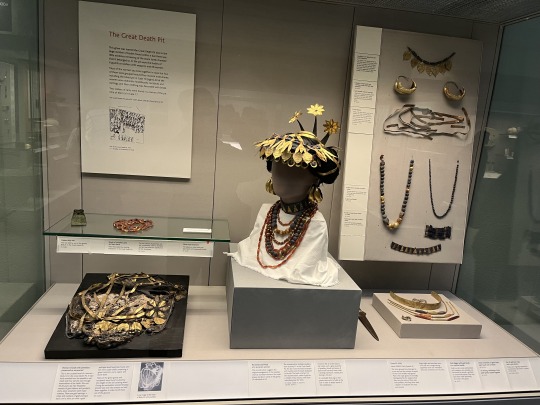
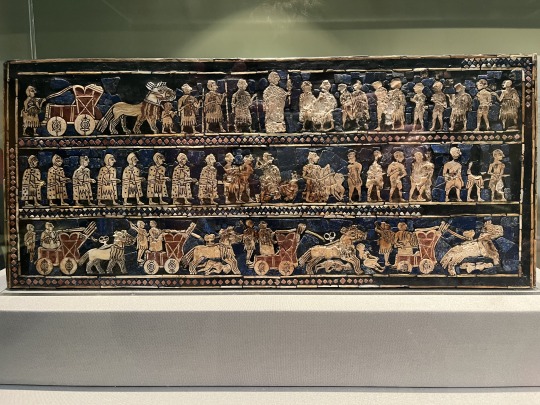
We visit the next exhibit in the next post here: [link]
0 notes
Link
Tina - The Tina Turner Musical, at the Aldwych Theatre, welcomes more than 1,000 schoolchildren.
0 notes
Text

1236-1240, 1240, 1241-1243). [1]
Elena Romanovna (or Maria Romanovna)[27 was a daughter of prince Roman Mstislavich of Halych and his wife, Predslava Rurikovna of Kiev [3] Daniel Frick (born 19 June 1978) is a retired Liechtenstein football striker. [1][2] Old Times is a play by Harold Pinter. [1] It was first performed by the Royal Shakespeare Company at the Aldwych Theatre in London on 1 June
1971. It starred Colin Blakely, Dorothy Tutin, and Vivien Merchant, and was directed by Peter Hall.
The play was dedicated to Hall to celebrate his 40th birthday. I Love You Avenue is the third solo album by English singer-songwriter Nick Heyward. It was released in 1988 through Reprise Records and produced two UK singles,
"You're My World' (#67 in the UK Singles Chart)
[3] and "Tell Me Why'. The Venezuela national under-20 football team represents Venezuela in international men's football competitions such as South American Youth Championship. [1] The team became runners-up in the 2017 FIFA U-20
World Cup. [2] Songs of Drinking and Rebellion is the first studio album released by the indie rock band Spent, in 1995.[2][3] The album was released on Merge Records and was followed by a tour with labelmates Superchunk. The album had no singles; however, a video for the song
"View from a Staircase" was made. Officine Ferroviarie Meridionali or OF was an Italian railway and rolling stock manufacturingJUNGLEWOODNETHERRACKAAAAAANETHERWARTENCHANTMENTTABLEAAAAAAAAAACHORUSFLOWERREDSTONEREPEATERAAAAAAAAREDSTONECOMPARATORTRiPWiREHOOKAAAAAAACOMMANDBLOCKSTiCKYPiSTONALiENSSPECiESAAFAiRiESDEiTiESGODSCLOWNSROBOTSANDROiDSARTiFiCiALiNTELLiGENCESBRAiNSPOWERSAAAAAAiNTELLiGENCEQUOTiENTSWORMSTAPEWORMSATUBESTUMORSCANCERSHOSTSENTiTiESFUNGiSAPARASiTESBACTERiASMiCROORGANiSMSAAAAAAMUSHROOMSSURGERiESSCiENCESPHYSiCSAAAAWiTCHCRAFTSMAGiCSVOODOOSHOODOOSAAAAAWiZARDSWARLOCKSCULTSSECRETSOCiETiESAAAALTEREGOSiNNERDEMONSCROSSROADDEMONSAMEDiCALTREATMENTS CLONES
1 note
·
View note
Text
Another great picture of Ian in Two Gentlemen in Verona in 1970 (one of my mum’s favorites). An intriguing stage direction that I would have loved to see. A modern approach of Shakespeare’s play, very inventive and deliciously funny. A beatnik vision, typical of the 70’s. Helen Mirren was in the cast too. And if I remember well costumes have been changed when the production was staged at the Aldwych Theatre.

#ian richardson#shakespeare#royal shakespeare company#the rsc#great british actors#two gentlemen of verona
3 notes
·
View notes
Text
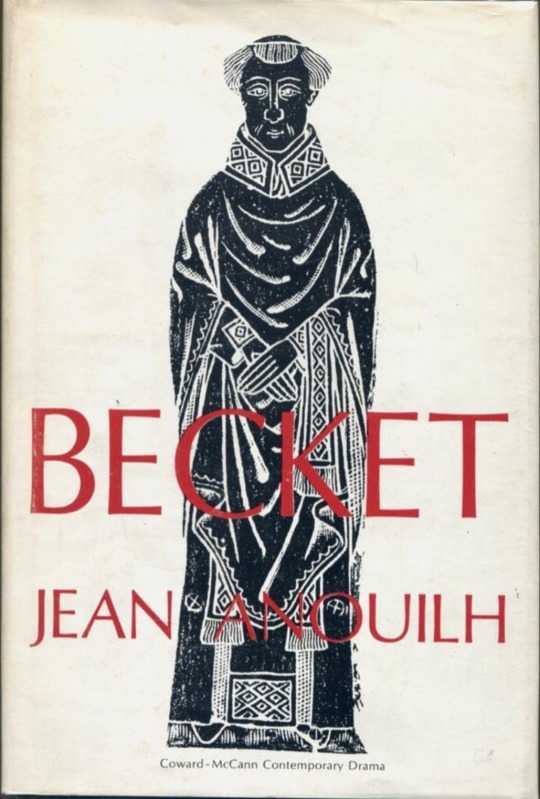
Play 16: Becket by Jean Anouilh (tr. Lucienne Hill)
First performed: St. James Theatre, New York, 1960
Quote: "You can't tell a lie. I know you. Not because you're afraid of lies - I think you must be the only man I know who isn't afraid of anything - not even heaven - but because it's distasteful to you. You consider it inelegant. What looks like morality in you is nothing more than aesthetics." (King)
Stage direction: [The wind of excommunication shivers through the Council.]
Notable cast: Laurence Olivier and Anthony Quinn starred in the 1960 US premiere as Becket and the King, with Olivier taking over as the King once Quinn left the production. The first UK production included Eric Porter, Christopher Plummer, Diana Rigg, Roy Dotrice, Patrick Wymark and Ian Holm among its cast; Plummer was a replacement for Peter O'Toole, who quit the production (and the RSC) to make Lawrence of Arabia (1962). O'Toole would play the King, opposite old friend Richard Burton as Becket, in Peter Glenville's 1964 film adaptation. Subsequent productions and adaptations have included actors such as Derek Jacobi, Dougray Scott, Toby Stephens and David Morrissey.
Notes: Anouilh drew on inaccurate sources when writing Becket, resulting in a play which diverges in places quite drastically from known history; these mistakes were discovered before publication, but the playwright decided he preferred the dramatic development to true historiography. It was the right choice, and whilst the play is often wrongly considered a historical piece, it's truthfully more of a tragedy, with all the trappings and devices that carries with it. As a study of the title figure, a man whose transformation from aesthete to servant of God is as surprising to himself as to his peers, Anouilh makes the interesting choice to keep Becket offstage for long sections of the play; his character and his person are better explored through the impact he has on those around him, in particular King Henry II, subtly identifying the cult of personality which would come to surround Thomas immediately after his death.
Read: for the first time (?), but the film is a favourite
#100plays#becket#jean anouilh#lucienne hill#modern drama#theatre#aldwych theatre#french theatre#1961#the becket cult is a fascinating footnote in the history of english theology#it grew rapidly immediately after the murder (Becket was canonised a saint astonishingly quickly‚ just three years after his death) and#held strong for decades. its impact was felt centuries later (Chaucer's Canterbury Tales concern a group of pilgrims travelling to Becket's#shrine) and Henry VIII considered his memory sufficient threat that he ordered the destruction of images and manuscripts referring to him#that a 20th century french playwright would choose for a subject this martyr might seem less obvious#but this is a play that is resolutely less interested in the saint and more in the man; his humanity‚ in every sense‚ good and bad#a play about transformation and change and resistance and resentment
12 notes
·
View notes
